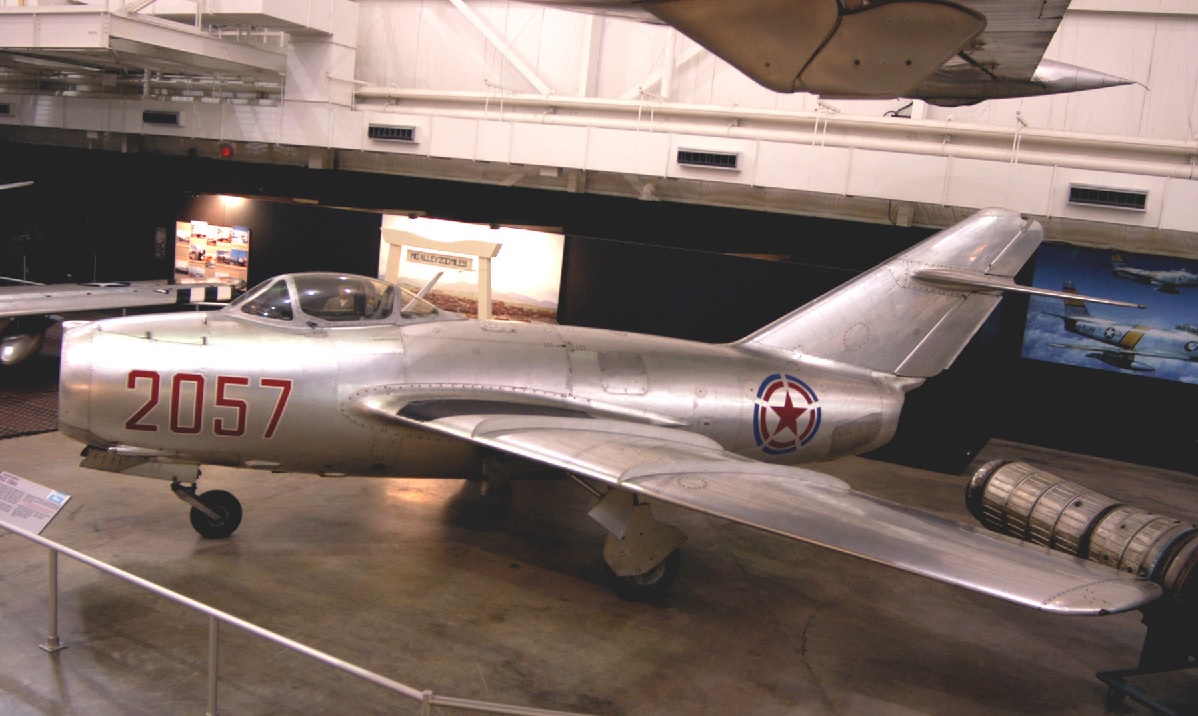As a result of the MiGs’ superiority against Luftwaffe pilots in World War II, the Air Force was obliged to stop using Superfortresses for daytime bombing flights and limit their usage to nighttime operations for the rest of the conflict in October 1951
The northwest portion of North Korea, between the Chongchon and Yalu rivers, witnessed an air campaign unlike any other before or after between December 1950 and July 1953. The North American F-86 Sabre, the main air superiority day fighter of the US Air Force, and the Mikoyan-Gurevich MiG-15, a powerful interceptor of the Soviet Red Air Force, engaged in almost all of the combat.
The aerial conflict over Korea, long thought to have been a one-sided conflict in the West, was actually one of the fiercest aerial conflicts of the 20th century. The myth that USAF pilots and aircraft were infallible and superior to their Soviet-supplied rivals was the most pervasive in the West among the many that evolved after the end of the Korean War.
Exaggerated claims of victory over “MiG Alley,” where the majority of aerial combat took place, led to, among many other fabrications, the assertion that USAF pilots flying the F-86 Sabre against their Communist rivals in the MiG-15 had a 10:1 victory-loss ratio. Such assertions would go uncontested until the Soviet combat archives were ultimately opened at the end of the Cold War.
After that, a very different narrative started to take shape. The aerial battles of the Korean War were, at least in the early years, well-matched affairs, fought to a near 1:1 victory-loss ratio, far from being resounding American victories over an unprepared foe.

‘The appearance of advanced MiG-15 jet fighters, secretly flown by experienced Red Air Force pilots, made operations by B-29s and F-8os over North Korea extremely dangerous. As a result, the Fourth Fighter Wing, equipped with the new F-86 Sabre, was sent to Korea to counter the Soviet air threat,’ says Col Walter J. Boyne – former B-50, B-47, and B-52 pilot historian, novelist, and Air and Space Museum director who passed on Jan. 9, 2020 – in Thomas McKelvey Cleaver’s MiG Alley: The US Air Force in Korea, 1950-53.
He continues;
‘Much of what has been recorded as “official history” of the Air Force in the Korean War is little more than recycled wartime propaganda. In the past 65 years, Korea has become the “forgotten war” to most Americans, and as a result, few historians have challenged these “facts.” One of the main myths is that the pilots who arrived in Korea in December 1950 with their Sabres were combat-experienced veterans of World War II. In fact, it was the Sabre pilots who faced combat-experienced enemies during 1951, a year that US pilots called “The Year of the Honcho,” during which the Americans played catch-up with their opponents. Captain Dick Becker, recognized as the second Air Force “MiG Ace” of the war (but the first whose victories are all confirmed by Soviet loss records), said of the fighting in 1951:
“There was no 14-to-1 kill ratio when I was there. The guys we flew against were good, and they were as committed as we were. Every fight that I was in was decided by the guy in the cockpit who was better able to take advantage of the moments presented by luck. The MiG-15 was a dangerous opponent. We were very evenly matched and I am certain that overall in that first year, we fought them to a draw.”

‘In fact, when actual losses are tallied up, 1951 was a draw, with the Sabres and MiGs scoring 1:1.
‘The MiGs were so good that in October 1951, they succeeded where the pilots of the Luftwaffe had failed in World War II: they inflicted such losses on the B-29s that the Air Force was forced to abandon daylight bombing missions and use the Superfortresses only at night for the rest of the war. Even with the Sabres providing cover over MiG Alley to block the MiG-15s from getting at the fighter-bombers over North Korea, the Russians and later the Chinese became such a threat that, by late 1952, fighter-bomber missions were not flown into MiG Alley until more Sabre-equipped fighter wings arrived as reinforcements in 1953, and even then the fighter-bombers were in seriously dangerous air north of the Chongchon River.’
Boyne concludes;
‘Regardless of the validity or accuracy of Air Force claims of enemy aircraft shot down, or of aircraft lost in combat, one thing stands clear: despite being outnumbered by as much as 10:1 during 1951 and much of 1952, the Air Force was successful in maintaining air superiority over North Korea. No Red Air Force combat aircraft ever flew over the battlefield on the 38th Parallel during three years of war. This is an accomplishment that is even more impressive when based on more realistic facts and figures than were given out at the time. Korea was a hard-fought war from the first day to the last.’
MiG Alley: The US Air Force in Korea, 1950-53 is published by Osprey Publishing and is available to order here.

Photo by ‘F-86 Sabre vs MiG-15’ by Doug Dildy and Warren Thompson © Osprey Publishing and U.S. Air Force

